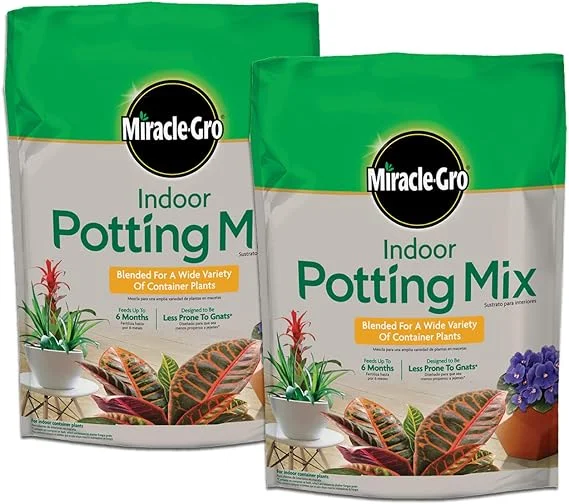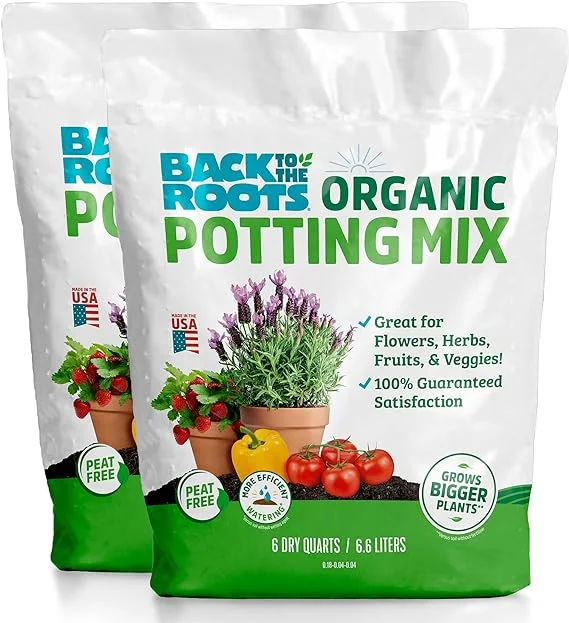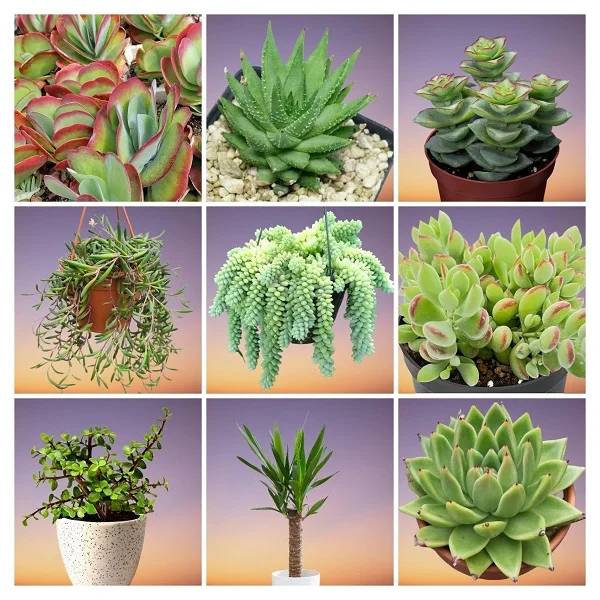Clivia miniata (Bush Lily) Care Indoors, Propagation, Common Problems and Solutions
Some links in this post may be affiliate links
Clivia miniata (Bush Lily) thrives in bright light with some direct sunlight, warm conditions, moderate humidity and moderately moist, rich, well-drained soils coupled with fortnightly feeding in the growing season.
Bush Lily is a spectacular indoor plant that will add a splash of color in any space. In this guide, we will cover everything you need to know about how to care for Clivia miniata. First we look at some facts about this plant.
Clivia miniata also called Natal Lily is one of the popular flowering plants on account of its large flower clusters and ability to easily adapt to indoor growing conditions.
Natal Lily is a sensitive plant which does not like to be disturbed therefore, do not move the plant when in bud or flower and do not repot unless the plant is pushing out of the container.
Nonetheless, when given the right conditions Bush Lily grows into large clumps. The plant spreads by means of rhizomes which store water and enable the plant to go for long periods without being watered. It is one of the best plants with low water needs.
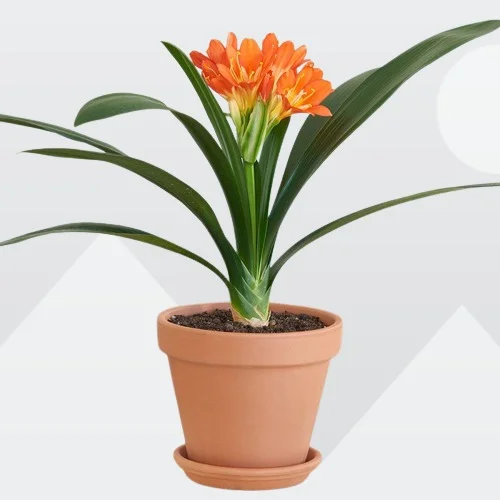
Botanical name: Clivia miniata
Family: Amaryllidaceae
Common names: Bush Lily, Natal Lily
Origin
Clivia miniata is native to the woodland habitats of South Africa as well as Swaziland.
How big are Bush Lilies?
Bush Lilies grow to a height of 18 inches and a spread of about 2 feet. Based on its compact size and requirement for some direct sunshine, Clivia miniata is one of the best plants for a sunny balcony.
Flower
Bush Lily flowers are orange, red, cream and yellow, and may have a faint but very sweet perfume. The flowers about 10-20 of them are borne on top of a tall stalk. It blooms in late winter to early spring.
Clivia miniata will not bloom when temperatures are too high or if the watering rules are not followed. On account of its spectacular blooms, it is among the best plants for a front porch where it will create a great first impression.
Is Bush Lily poisonous?
Yes. Bush Lily is toxic to both humans and pets as indicated by ASPCA. It contains small amounts of lycorine which makes it poisonous. Keep it away from the reach of children, cats, dogs and other pets.
How do you care for a Bush Lily indoors?
To care for a Bush Lily indoors, provide bright light with 4-6 hours of direct sunlight, average warmth of 16-280C , humidity of 50-55% and moderately moist, rich, well-drained soils coupled with fortnightly feeding in spring and summer.
Clivia miniata care does not require too frequent repotting as it blooms best when pot-bound. Pruning is needed to keep the plant neat and also reduce pest and disease infestations. Keep reading for more on these growing conditions and how to provide them.
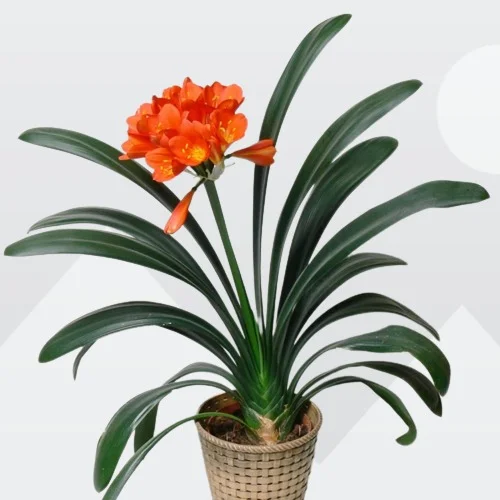
Watering
How often should I water a Clivia miniata?
Water Clivia miniata liberally in spring and summer untile water drips through the drainage hole. Allow the top 2-3 inches of soil to dry out between waterings. Keep the soil moderately moist and avoid overwatering to prevent rotting, yellowing, leaf fall and flowerbud drop.
Decrease watering in fall and winter to maintain the soil barely moist as growth is minimal at this time. Do not allow the soil to dry out completely to prevent wilting, yellowing, leaf loss and flowerbud drop.
Use water that is at room temperature to prevent cold shock which can lead to stunted growth and leaf drop. Avoid using chlorinated water as it can cause browning of leaf edges; use rain water or filtered water.
Confirm that the pot has a drainage hole and the soil is well-draining to prevent waterlogging. Bush Lily does not like to sit in overly wet soil as it can cause rotting of the underground rhizomes.
Take care not to wet the foliage during water to minimize funal diseases; you may water from the bottom.
Light Requirements
Do Bush Lilies like sun or shade?
Bush Lily likes bright light with 4-6 hours of morning or late afternoon sunshine to promote flowering. Keep it away from hot midday sunshine to prevent scorching, yellowing and flowerbud drop.
Too little light will result in reduced growth, yellowing and lack of flowers. Therefore, if the natural light is not sufficient, use a full spectrum grow light to supplement it.
Regularly rotate the pot to ensure that the plant receives adequate light on all sides for even growth.
Temperature & Humidity
Bush Lily flourishes in an average temperature of 16-280C. Keep it away from sources of drafts as they can cause reduced growth, yellowing, leaf loss and flowerbud drop.
Clivia miniata blossoms in a humidity of 50-55%; it has no need for extra humidity. However, too dry air can lead to brown leaf tips and flowerbud drop. You may increase humidity by use of a wet pebble tray or by grouping the plants together. Ensure that there is good air circulation to discourage fungal diseases.
Fertilizer
How do you fertilize Clivia miniata?
Fertilizer your Clivia miniata with a phosphorous-rich, water-soluble fertilizer every 2-3 weeks in spring and summer to promote flowering. Do not feed in fall and winter to prevent fertilizer burn as growth is reduced at this time.
Every 1-2 months, leach out accumulated salts by running copious amounts of water through the soil until it drains through the drainage hole.
Potting Soil
What is the best soil for Bush Lily?
The best soil for Bush Lily should be slightly acidic to neutral, rich in organic matter and free-draining to prevent waterlogging. A blemd of 2 parts all purpose potting mix and 1 part perlite (for drainage) is ideal for this plant.
Repotting
Repot Bush Lily into a pot one size larger than the current one after flowering, only if the plant is pot-bound. Being pot-bound encourages flowering.
Select a pot with a drainage hole and free-draining soil to avoid getting soggy soil which can lead to rotting and death of the plant. Check out these pots with drainage holes on Amazon.
Do not repot a plant that is in flower as the repotting shock can cause flowerbud drop and a short flowering period.
Pruning & Grooming
Pruning Clivia miniata involves removal of dead blooms and leaves to keep the plant neat and reduce pest and disease infestations. Cut the leaves at the base when they begin to shrivel.
Once in a while, clean the leaves by damp-wiping with a soft cloth to keep away pests and diseases.
Clivia miniata Propagation
Clivia miniata is propagated by plant division in spring to early summer when in active growth.
Propagating Bush Lily by plant division
- Water the plant thoroughly at least 1 day before to make it easier to divide and also hasten establishment.
- Slip the plant out of its pot and carefully divide the rhizome into sections while ensuring each section has adequate roots and some leaves.
- Select a 6 or 8 inches pot and ensure that the pot has a drainage hole to prevent the soil from getting soggy as it can lead to rotting.
- Fill the pot with loose, free-draining soil, moistens it slightly and make a hole in the center of the pot. Ensure that the hole is slightly wider than the root base of the section.
- Place the section in the previously made hole and lightly firm the soil around the base while taking care not to bury it too deep; maintain the section at the same soil level it was in the previous pot.
- Position the set up in a warm, well-lit place away from direct sunlight to prevent scorching.
- Wet the soil thoroughly and keep it moist until the new plant is well established after which you can begin routine care.
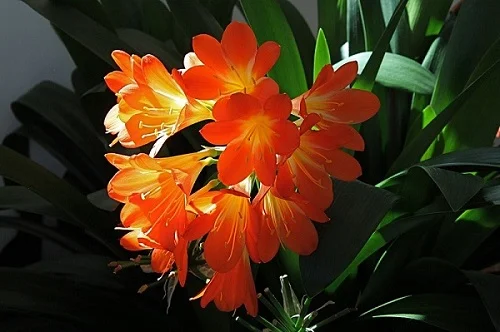
Clivia miniata Problems & Remedies
Bush Lily problems are yellow leaves, brown leaves, plant dying, leaf and flowerbud drop, lack of blooms, pests and diseases. Keep reading for more on these problems and how to solve them.
Yellow leaves
Why is my Bush Lily turning yellow?
Some of the causes of yellow leaves on your Bush Lily are too little light, inconsistent watering, soggy soil, nutrient deficiency, temperature stress, too much sunlight and aging.
How to fix it
Too little light: Move the plant to a brighter spot or instal a grow light if the natural light is not enough.
Inconsistent watering: Do not water on a schedule. Water only when the top 2-3 inches of soil dry out.
Soggy soil: Use a well-draining soil and a pot with a drainage hole.
Nutrients deficiency: Apply a phosphorous-rich, water-soluble fertilizer every 2-3 weeks in spring and summer.
Temperature stress: Keep the plant away from drafts coming from hot surfaces, hot air vents, AC units, windy doors among others.
Too much sunlight: Move the plant to a more shaded spot or use a light curtain to shield it from the sunshine.
Aging: This is a natural process; as the plant matures the lower leaves turn yellow and fall off.
Brown leaves
Why are the leaves on my Bush Lily turning brown?
The main causes of brown leaves on your Bush Lily are inconsistent watering, soggy soil, salts buildup, extreme temperatures or exposure to hot sunshine.
How to fix it
Inconsistent watering: Do not water on a schedule. Water when the top 2-3 inches dry out. Never allow the soil to dry out completely.
Soggy soil: Use a pot with a drainage hole and well-draining soil.
Salts buildup: Regularly, flush out excess salts by running a stream of water through the soil until it comes out through the drainage hole.
Temperature stress: Keep the plant away from sources of drafts like AC units, drafty windows, heat sources, windy doors and others.
Exposure to hot sunshine: Position the plant away from hot midday sunshine.
Plant dying
Why are my Clivia miniata dying?
Your Clivia miniata are dying due to too little light, incorrect watering, soggy soil, temperature stress or root-rot disease.
How to fix it
Too little light: Move the plant to a brighter spot or instal a grow light if the natural light is not enough.
Incorrect watering: Do not water on a schedule. Water only when the top 2-3 inches of soil dry out.
Soggy soil: Use a pot with a drainage hole and a well-draining soil.
Temperature stress: Keep the plant away from sources of drafts like hot surfaces, hot air vents, AC units, windy doors among others.
Root-rot disease which is prevalent in soggy soil. It is characterized by yellowing and wilting leaves, rapidly followed by browning and plant collapse.
How to fix it
- Carefully slip the plant out of its pot and inspect the roots.
- Trim the brown-black, mushy roots and treat the healthy roots with a copper-based fungicidal solution as instructed by the manufacturer.
- Disinfect the pot with the fungicidal solution or use a fresh pot to repot the plant in fresh, well-draining soil.
- Do not water the plant immediately; keep it dry for 5-7 days before you can resume watering.
- Use a pot with a drainage hole and well-draining soil to prevent the soil from getting soggy.
- Lessen watering in fall and winter as growth is slowed at this time; keep the soil slightly moist.
Leaf and flowerbud drop
Leaf and flowerbud drop on Clivia miniata may be caused by too little light, drafts, dry air, inconsistent watering or pest infestations.
How to fix it
Too little light: Move the plant to a brighter spot or use a grow light if the natural light is not enough.
Drafts: Keep the plant away from sources of drafts like AC units, drafty windows, hot air vents, windy doors and others.
Dry air: Set the pot on a wet pebble tray, use a humidifier or group the plants together to raise humidity.
Inconsistent watering: Water when the top 2-3 inches of soil feel dry but do not allow the soil to dry out completely. Do not water on a schedule.
Pests infestations: Regularly check underneath and between the leaves for these pests and carry out timely control measures.
Lack of blooms
Lack of blooms on Bush Lily may be caused by too frequent repotting, nutrients deficiency, inconsistent watering, soggy soil, extreme temperatures or too little light.
How to fix it
Too frequent repotting: Repot the plant into a pot one size larger, only when it is extremely pot-bound as being pot-bound promotes flowering.
Nutrients deficiency: Feed with a phosphorous-rich, water-soluble fertilizer every 2-3 weeks in spring and summer to encourage flowering.
Inconsistent watering: Water when the top 2-3 inches of soil dry out but do not allow it to dry out completely.
Soggy soil: Use a a pot that has a drainage hole and well-draining soil.
Extreme temperatures: Keep the plant away from draft sources like hot air vents, hot surfaces, AC units, windy doors and others to maintain a temperature of 16-280C.
Too little light: Move the plant to a brighter spot where it will receive bright light with 4-6 hours of direct sunshine or instal a grow light if the natural lighting is not adequate.
Pests
Common pests on Bush Lily are mealybugs, spider mites and scale insects.
How to fix it
- Regularly inspect the plant for pests and take timely control measures.
- Isolate the affected plant to prevent spread to other plants.
- Treat the affected plant with neem oil or insecticidal soap as per the manufacturers' recommendations.
- Occasionally damp-wipe the leaves with a soft cloth to discourage the pests.
- Keep the plant well pruned to reduce the hiding and breeding places for these pests.
Diseases
Bush Lily is prone to damping off, leaf rust and leaf spot which are prevalent in overwet conditions coupled with poor air circulation.
How to fix it
- Remove and burn the affected parts to reduce the risk of spread to the rest of the plants.
- Spray the affected plant with a systemic fungicide and ensure to cover all the parts with the fungicidal solution.
- Ascertain that the pot has a drainage hole and the soil is well-draining to prevent waterlogging.
- Reduce watering in fall and winter as growth is reduced at this time.
- Do not mist the plant or wet the leaves during watering as they encourage the diseases infestations.
- Ensure that there is good air circulation to prevent disease infestations.
You liked it? Share on social media.
Related Content
Amazon Associates Disclosure
Homeplantsguide.com is a participant in the Amazon Services LLC Associates Program, an affiliate advertising program designed to provide a means for sites to earn advertising fees by advertising and linking to amazon.com.

